Politics
COP30 climate summit set for last-gasp showdown over fossil fuels and finance
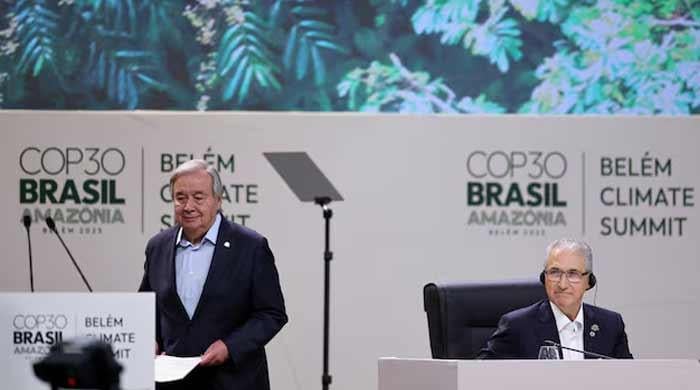
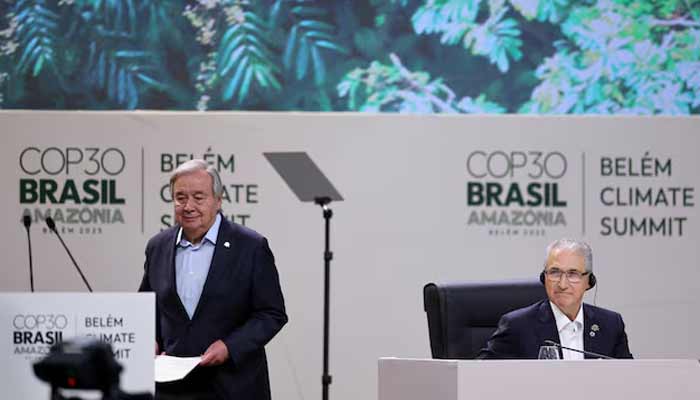
The COP30 climate summit was headed for a showdown on Friday over the future of fossil fuels after hosts Brazil dropped efforts to develop a global plan to shift away from oil, gas and coal from its proposed deal.
A draft text for a deal for this year’s UN climate summit, released before dawn on Friday, contained no reference to fossil fuels, dropping entirely a range of options on the subject that had been included in an earlier version.
The issue has been one of the most contentious at the two-week conference of nearly 200 governments in Brazil’s Amazon city of Belem.
A group of more than 30 nations sent a letter to the COP30 presidency late on Thursday saying they could not accept a deal which failed to include a commitment to develop a roadmap to transition away from fossil fuels.
That has set the stage for a showdown in the final hours of the conference, which is scheduled to end at 1800 local time (2100 GMT). Previous COP summits have blown past their deadlines before eventually reaching a compromise.
“We are disappointed with the text currently on the table,” EU climate commissioner Wopke Hoekstra said in a statement, adding it lacked ambition on action to cut emissions.
Countries are set to air their thoughts on the draft in a public plenary session starting around 1300 GMT. The deal text, which is still subject to further negotiation, would need approval by consensus in order to be adopted.
Arguments centre on fossil fuel roadmap
For days, nations have wrangled over the future of fossil fuels, whose burning emits greenhouse gases that are by far the largest contributor to global warming.
Dozens of nations have been pushing hard for a “roadmap” laying out how countries should follow through with a promise made at COP28 two years ago to move away from fossil fuels.
Saudi Arabia and other oil-producing nations are opposing this, negotiators at COP30 told Reuters. The Saudi government communications office did not immediately respond to an emailed request for comment.
A negotiator from one developing country told Reuters its government did not oppose a fossil fuel phase-out and was open to negotiating, but was concerned the draft text offered little to address their concerns on other issues including finance.
“You can’t keep saying that things that matter to us are no longer important and that things that matter to the developed countries are the only things that are important,” the negotiator said.
The letter from those supporting a roadmap – who include Colombia, France, Germany, Kenya, the Marshall Islands, Mexico, the Netherlands, South Korea, Spain and Britain – said the draft deal, in its current form, “does not meet the minimum conditions required for a credible COP outcome”.
“We cannot support an outcome that does not include a roadmap for implementing a just, orderly, and equitable transition away from fossil fuels,” the letter said.
Climate finance and trade
The draft called for global efforts to triple the financing available to help nations adapt to climate change by 2030, from 2025 levels.
However, it did not specify whether this money would be provided directly by wealthy nations, or other sources including development banks or the private sector.
That may disappoint poorer nations who want stronger guarantees that public money will be spent on this area.
Investments in adaptation — such as improving infrastructure to cope with extreme heat, or reinforcing buildings against worsening storms — are often vital for saving lives but offers little financial return, making it difficult for such investments to attract private finance.
The draft deal would also launch a “dialogue” at upcoming COP climate summits on trade, involving governments and other actors including the World Trade Organisation (WTO).
That would be a win for countries including China who have long demanded that trade concerns be part of the world’s climate summit. But it may be uncomfortable for the European Union, as demands for such discussions have often focused on the EU carbon border levy. South Africa and India have criticised the levy and argued for it to be scrapped.
Politics
Afghanistan seeks new trade routes as Pakistan ties sour
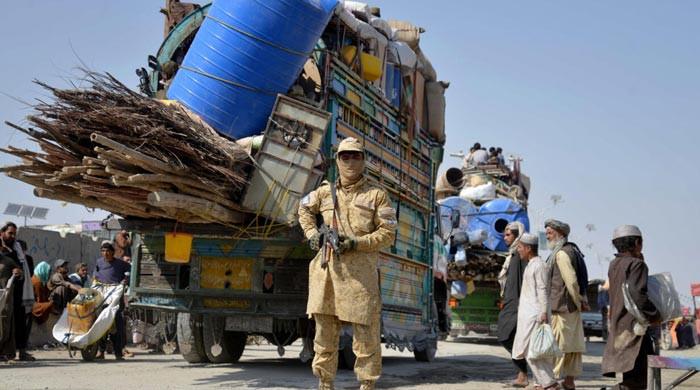
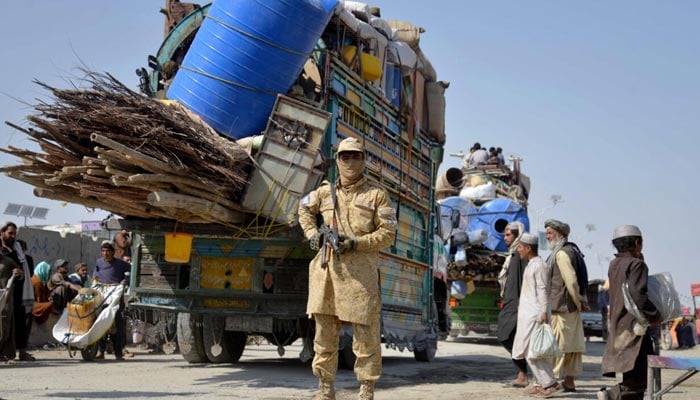
- Trade with Iran and Turkmenistan jumped significantly.
- Russia received Afghan apples and pomegranates.
- Afghan exports face delays without cold storage.
Afghanistan is scrambling to diversify its trade partners after a deadly border clash with Pakistan last month brought ties to their lowest point in years.
The South Asian neighbours have been locked in an increasingly bitter dispute since the Taliban took over Kabul in 2021, with Islamabad saying that Afghanistan harbours the militants behind cross-border attacks.
Abdul Ghani Baradar, Afghanistan’s deputy prime minister for economic affairs, urged traders last week to “redirect their trade toward other alternative routes instead of Pakistan”.
Pakistan is landlocked Afghanistan’s top trading partner, supplying rice, pharmaceuticals and raw materials, while taking in 45% of Afghan exports in 2024, according to the World Bank.
More than 70% of those exports, worth $1.4 billion, are perishable farm goods such as figs, pistachios, grapes and pomegranates.
Dozens of Afghan trucks were stranded with rotting produce when the frontier shut on October 12 due to deadly cross-border fire, which was followed by a fragile truce.
Losses have topped $100 million on both sides, and up to 25,000 border workers have been affected, according to the Pakistan-Afghanistan Joint Chamber of Commerce and Industry (PAJCCI), which seeks to promote bilateral trade.
Baradar warned traders that Kabul would not intervene if they kept relying on Pakistan.
Wary of further disruptions, the Taliban government is now hedging its bets with Iran, Central Asia — and beyond.
Pomegranates to Russia
Trade with Iran and Turkmenistan has jumped 60-70% since mid-October, said Mohammad Yousuf Amin, head of the Chamber of Commerce in Herat, in western Afghanistan.
Kabul also sent apples and pomegranates to Russia for the first time last month.
Russia is the only country to have officially recognised the Taliban administration.
Taliban leaders crave wider recognition and foreign investment, but sanctions on senior figures have made investors wary.
The vast market in India is a prime attraction. On Sunday, state-owned Ariana Afghan Airlines cut freight rates to the country of 1.4 billion people.
Two days later, Kabul sent its commerce and industry minister to New Delhi.
“Afghanistan has too many fruits and vegetables it cannot store because there are no refrigerated warehouses,” said Torek Farhadi, an economic analyst and former IMF adviser.
“Exporting is the only way,” he told AFP. And quickly, before the products spoil.
Kabul touts Iran’s Chabahar port as an alternative to Pakistan’s southern harbours, but Farhadi noted it is farther, costlier and hampered by US sanctions on Tehran.
‘Distraught’
“It’s better for both countries to end this trade war… They need each other,” Farhadi said as Pakistan maintains that the border closure has been done to curb militant infiltration.
The spokesman for Pakistan’s foreign ministry said on Friday that Islamabad had reached its “threshold of patience” after recent attacks.
“Either we get ourselves killed or we undertake very risky trade… This is a difficult choice that we have made,” spokesman Tahir Hussain Andrabi told a weekly briefing.
“Can you put a price tag on a human life, on a Pakistani life?” he said.
In Peshawar, near the frontier, Afghan produce has all but vanished from markets.
Grapes cost four times more, and tomatoes have more than doubled to over 200 rupees (70 cents) a kilogram, an AFP correspondent found.
On Monday, the PAJCCI urged Islamabad to act, warning of mounting costs as shipping containers bound for Afghanistan and Central Asia remain stuck in Pakistan.
Each container is racking up $150-$200 in daily port charges, the group said, adding: “With thousands of containers stuck, the collective economic burden has become unbearable and continues to grow with each passing day.”
Truck driver Naeem Shah, 48, has been waiting at the Pakistani border town of Chaman with sugar and cooking oil bound for Afghanistan.
“I haven’t been paid for a month. No matter who I call, they say there is no money because the border is closed,” he told AFP.
“If it doesn’t reopen, we will be distraught.”
Politics
India’s Tejas fighter jet: specs and key details
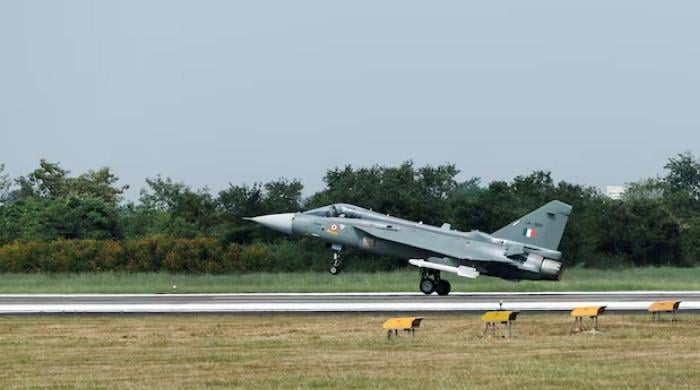

India’s defence and aviation sector suffered a major blow when its homegrown Tejas Mk-1A fighter jet crashed during an aerial display at the Dubai Airshow 2025 on Friday.
The pilot lost his life in the deadly accident, with the Indian Air Force announcing that a court of inquiry was being constituted, “to ascertain the cause of the accident”.
“IAF deeply regrets the loss of life and stands firmly with the bereaved family in this time of grief,” a post on the official X account of the IAF read.
The fighter jet, involved in the crash, is India’s first indigenous fighter, taking its maiden flight in January 2001, according to a report by AFP.
While the concept for a homegrown fighter aircraft began in the 1970s, actual work started on the aircraft project in the 1980s.
However, India’s state-owned Hindustan Aeronautics Limited’s (HAL) project for the fighter jet has faced years of criticism due to delays and cost overruns.
After years of delays, the first two Tejas fighter jets were finally handed over to the IAF in 2016.
India designates the single-engine jet as a multi-role light combat aircraft, featuring a delta-wing design.
HAL has reportedly equipped the modern variants with advanced avionics, an Active Electronically Scanned Array (AESA) radar, and enhanced electronic warfare systems.
According to Indian media outlets, the fighter jet can carry I-Derby extended-range (ER) and Astra beyond-visual-range (BVR) air-to-air missiles.
Tejas is reportedly also capable of firing short-range missiles such as the R-73, Python-5, and ASRAAM.
Recently, India signed a deal with United States’ General Electric to buy 113 engines to power its Tejas fighter jets, Reuters reported.
In a statement on November 7, HAL said that the deal was a follow-on order to power more of the fighters, with the engines expected to be delivered over five years from 2027.
The rollout of the fighter jet has been delayed due to slow deliveries from General Electric of 99 engines ordered in 2021, of which only four have arrived so far. GE has blamed supply chain issues following COVID-19.
Politics
India’s homegrown Tejas fighter jet crashes at Dubai airshow, killing pilot
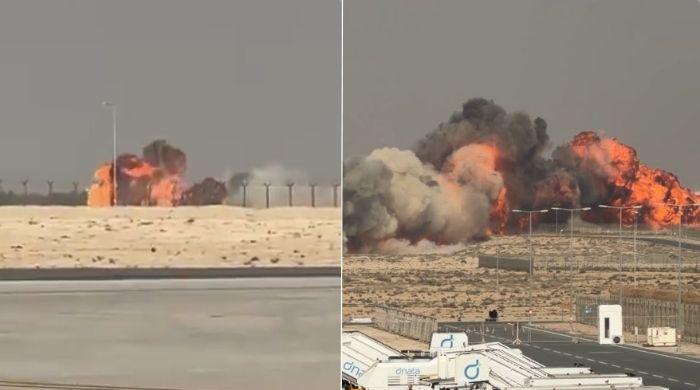

- Single-engine Tejas is India’s first indigenous fighter jet.
- Tejas crashes for second time, first incident in March 2024.
- Court of inquiry being set up to ascertain cause of crash: IAF
An Indian Tejas fighter jet crashed in a ball of fire in front of horrified spectators during an aerial display at the Dubai Airshow on Friday, and the Indian Air Force said it was setting up a court of inquiry to investigate the cause.
Footage from the site showed black smoke rising behind a fenced airstrip. Dubai’s government shared a photograph of firefighting teams dousing smouldering wreckage.
Jignesh Variya, 46, who was attending the show with his family, told Reuters the fighter jet had been flying for no more than eight or nine minutes and done two to three laps when it went into a nose-dive before crashing at around 2:15pm (1015 GMT).
“I could see three different fireballs when it collided with the ground,” he said. “Everybody in the crowd stood up there on their feet, and then maybe in around 30 seconds, the emergency vehicles rushed over to the location at the crash site.”
In a statement on X, the Indian Air Force confirmed the death of the pilot in the incident.
“An IAF Tejas aircraft met with an accident during an aerial display at [the] Dubai Air Show today. The pilot sustained fatal injuries in the accident,” the Air Force said.
“IAF deeply regrets the loss of life and stands firmly with the bereaved family in this time of grief,” the IAF posted. A court of inquiry is being constituted to ascertain the cause of the accident.”
India’s Chief of Defence Staff General Anil Chauhan and all ranks of the Indian Armed Forces expressed their deep regret over the incident.
The incident occurred during a scheduled aerial display, which is part of the prestigious airshow attended by aviation companies and military delegations from around the world.
In a statement, the Dubai Media Office said that firefighting and emergency teams responded rapidly to the incident and are currently managing the situation on-site.
The Dubai Airshow administration announced that a complete investigation will be carried out into the crash. The airshow was resumed after a brief one-hour halt, with further aerial displays scheduled to be carried out.
Indian media said the Tejas fighter jet went down while performing an aerial manoeuvre at the event.
Dubai’s government shared a photograph of firefighting teams dousing a smouldering wreckage. It said emergency teams were managing the situation on-site.
Second known crash of Tejas
It was the second known crash of the fighter jet, which is built by state-owned Hindustan Aeronautics Ltd and powered by General Electric engines. The first crash was during an exercise in India in 2024.
The homegrown jet, whose name means “brilliance” in Sanskrit, is seen as crucial for India’s efforts to modernise its air force fleet of mainly Russian and ex-Soviet fighters.
The crash happened during the last day of the airshow, the Middle East’s largest aviation event, which started on Monday. Flying had resumed later on Friday, witnesses said, with jets back in the sky above the show site.
“A court of inquiry is being constituted to ascertain the cause of the accident,” the Indian Air Force said in a statement.
GE said in a statement it was ready to support the investigation.
“We are deeply saddened by the loss of the Indian Air Force Tejas fighter jet at the Dubai Airshow and extend our heartfelt sympathies to the loved ones of the pilot,” a GE spokesperson said.
Hundreds of people were watching from a grandstand, while the apron was packed with planes, helicopters and other hardware on static display.
Thousands of people have attended the show this week, including aviation industry leaders and military officials.
Dubai is the world’s third largest airshow after Paris and Britain’s Farnborough, held in alternate years, and among the most international, with Chinese and Russian weapons represented, as well as aircraft from India and its regional rival, Pakistan. The accident was the first in the history of the airshow, which dates back to 1986.
India’s Tejas fighter jet
The Tejas fighter jet — designed as a light combat jet to replace the fleet of Russian MiG-21s — is India’s first indigenous fighter, taking its maiden flight in January 2001.
“It is the first fully domestic Indian fighter that is not based on foreign designs,” said British-based defence analyst Francis Tusa, adding that export interest so far had been limited. “There is work on a Tejas Mark II,” he said.
While the concept for a homegrown fighter aircraft began in the 1970s, actual work started on the aircraft project in the 1980s.
However, India’s state-owned Hindustan Aeronautics Limited’s (HAL) project for the fighter jet has faced years of criticism due to delays and cost overruns.
After years of delays, the first two Tejas fighter jets were finally handed over to the IAF in 2016.
India designates the single-engine jet as a multi-role light combat aircraft, featuring a delta-wing design.
HAL has reportedly equipped the modern variants with advanced avionics, an Active Electronically Scanned Array (AESA) radar, and enhanced electronic warfare systems.
According to Indian media outlets, the fighter jet can carry I-Derby extended-range (ER) and Astra beyond-visual-range (BVR) air-to-air missiles.
Tejas is reportedly also capable of firing short-range missiles such as the R-73, Python-5, and ASRAAM.
Recently, India signed a deal with United States’ General Electric to buy 113 engines to power its Tejas fighter jets, Reuters reported.
In a statement on November 7, HAL said that the deal was a follow-on order to power more of the fighters, with the engines expected to be delivered over five years from 2027.
The rollout of the fighter jet has been delayed due to slow deliveries from General Electric of 99 engines ordered in 2021, of which only four have arrived so far. GE has blamed supply chain issues following COVID-19.
-

 Tech6 days ago
Tech6 days agoNew carbon capture method uses water and pressure to remove CO₂ from emissions at half current costs
-

 Politics1 week ago
Politics1 week agoBritish-Pakistani honoured for transforming UK halal meat industry
-

 Business6 days ago
Business6 days agoThese 9 Common Money Mistakes Are Eating Your Income
-

 Sports6 days ago
Sports6 days agoTexas A&M officer scolds South Carolina wide receiver after touchdown; department speaks out
-

 Business7 days ago
Business7 days agoWhat’s behind Rachel Reeves’s hokey cokey on income tax rises?
-

 Sports7 days ago
Sports7 days agoApple scrapping MLS Season Pass service in ’26
-

 Tech1 week ago
Tech1 week ago$25 Off Exclusive Blue Apron Coupon for November 2025
-

 Fashion1 week ago
Fashion1 week agoAfter London, Leeds and Newcastle, next stop Glasgow for busy Omnes






